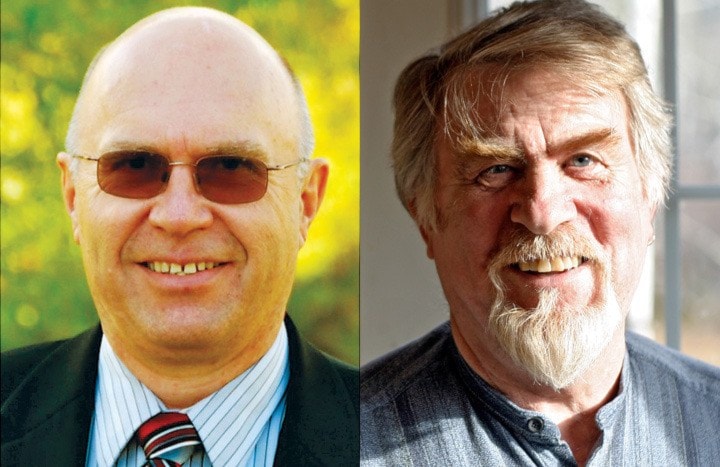Residents who live in Area G will see two names on the Nov. 19 ballot: Lance Hamblin and Rob Newell.
The Houston Today spoke to both candidates to find out what they believe are the key issues for people living in Area G: Houston rural, which includes Topley and Granisle.
Born in Smithers, Lance Hamblin ran a family business in Houston before he was first elected Area G director in 2008.
"I believe I've done a pretty good job in the last three years, and I would like to continue to represent the people of Area G at the Regional District," he said.
As well as representing Area G, Hamblin also served as district chair.
"One of my major thrusts as chair of the regional district has been to try and pull other local governments together, to create a voice for northern B.C.," he said.
For example, Hamblin said northern B.C. has room for one or two more inland container ports—transportation hubs that link road and rail container traffic.
Local governments across the north should join in lobbying Victoria to fund those inland ports and to upgrade the existing sea ports in Prince Rupert, he said.
"We have a very small percentage of the population, but we're the heart of B.C.," he said, noting how much of the province's resource revenues come from the north.
Looking ahead, Hamblin said Area G has to get ready for a new natural gas pipeline that will bring extra construction to the area.
The same goes for larger mining projects north of here, he said.
"Houston has a very strong industrial support centre," Hamblin said. "We have Finning, we have SMS Equipment, and we have the two big truck shops."
Proposals for major mines north of Houston will "open up opportunities to attract and retain the people in those support industries," he said.
Looking back on his first term, Hamblin said he is proud of the renovations he led at the Topley community hall and ball field, and glad he was able to help fund wireless internet projects for Topley Landing and Mill Bay Road.
Hamblin spoke to the Houston Today from Vancouver, where he attended a conference on waste wood.
"All that wood that goes up in smoke every fall—there's opportunity to utilize that," he said.
After living in Area G for the last seven years, Rob Newell said he wants to see local governments do more to diversify the local economy.
"We need to craft our own economy destiny, not depend on others to do it," he said. "I don't really think that's been done here."
Newell is a former financial analyst for Ford Motor Company, and a budget analyst for Western Star Trucks. Newell also ran a successful business consultant firm for 17 years, and is a former commercial pilot.
If elected, Newell said he would put his business and finance skills to good use in Area G.
"I've talked in the past about running the region like a successful business—that's my background. And you don't have just one or two profit centres in a successful business," he said.
"You have to increase those profit centres. You have to look to see where you can find a market niche."
Newell is a founding member of Skills Training and Sustainable Homes (STASH), a society that originally came together to build log homes like the one he lives in now.
Several years ago, STASH harvested wood from the Buck Flats area and built a pair of log homes in Steelhead Park. One sold to an owner in Haida Gwaii, and the other was raffled off as a fundraiser for the Houston senior's society.
"A number of people who joined the course went into log home building," Newell said. At the same time, the society managed to secure a $100,000 grant for the District to spend on energy alternatives.
"What I see that's necessary here is a diversification of the economy," Newell said. "It means looking beyond our current community economic base, with a dependency on tax or government funding."
A local government effort in Lake County, outside Kelowna, is a good example to follow, said Newell.
After forming a partnership with the federal government and a private company, Lake County launched a run-of-river facility that feeds between $450,000 to $600,000 in electricity back to the B.C. grid, he said.
The Lake County project lowers the municipality's costs, he said, bringing a better business climate along with the chance to train local people in a developing technology.
"Why can't we do something like that?" he asked, adding that local rivers have promising sites for similar project. "It just takes thinking outside the box and working on a common goal with people."
